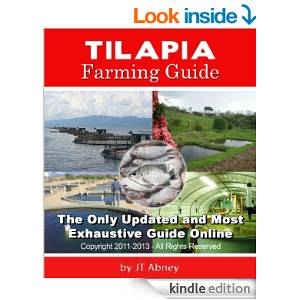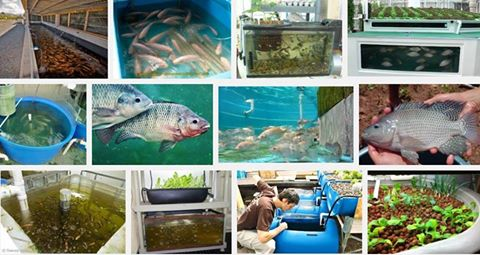Tilapia is the Common name for nearly a hundred species of cichlid fish from the tilapine cichlid tribe. Tilapia inhabit a variety of fresh water habitats including shallow streams, ponds, rivers and lakes. They are especially popular in Aquaponic systems.
Tilapia have very low levels of mercury as they are fast-growing and short-lived with a primarily herbivorous diet, and thus do not accumulate mercury found in prey. Tilapia meat is a low saturated fat, low calorie, low carbohydrate and low sodium protein source. It is a source of phosphorus, niacin, selenium, vitamin B12 and potassium.
The fish are usually fed with fish foods pellets or some type of organic fish food. The fish take in the foods and create a waste stream. The squander stream from the fish mixes in with the water. Solids and unused fish food collect in the fish keeping tank.
Tilapia have very low levels of mercury as they are fast-growing and short-lived with a primarily herbivorous diet, and thus do not accumulate mercury found in prey. Tilapia meat is a low saturated fat, low calorie, low carbohydrate and low sodium protein source. It is a source of phosphorus, niacin, selenium, vitamin B12 and potassium.
The fish are usually fed with fish foods pellets or some type of organic fish food. The fish take in the foods and create a waste stream. The squander stream from the fish mixes in with the water. Solids and unused fish food collect in the fish keeping tank.
Part of the h2o contained in the fish keeping tank is utilized to flood the developing beds. The developing beds will include your fruits and vegetables. The nutrients contained in the h2o are utilized by the vegetation as their own meals resource. The crops extract the nutrients and filter the drinking water pumped from the fish holding tank.
Following the water from the fish holding tanks is filtered via the growing beds, it is returned to the fish holding tank. The fish dwell in a clean healthy water provide and the cycle is recurring once more and once again. Your plants will develop like gangbusters in the nutrient rich drinking water in the aquaponics program.
Aquaponics methods can be expanded by adding greater expand beds and growing the ability of the fish holding tanks. These techniques are easy adequate to build at residence and will generate abundant organic and natural fruits and vegetables with a bonus harvest of new fish.
Following the water from the fish holding tanks is filtered via the growing beds, it is returned to the fish holding tank. The fish dwell in a clean healthy water provide and the cycle is recurring once more and once again. Your plants will develop like gangbusters in the nutrient rich drinking water in the aquaponics program.
Aquaponics methods can be expanded by adding greater expand beds and growing the ability of the fish holding tanks. These techniques are easy adequate to build at residence and will generate abundant organic and natural fruits and vegetables with a bonus harvest of new fish.
Fish farming, Aquaculture and Aquaponics are big business and only getting bigger. The amount of seafood consumed annually is staggering and the global demand for all types of seafood products continues to rise. Tilapia has been the fastest growing segment of the seafood market for the past decade and is exclusively farm-raised. The Tilapia Industry is a $5 Billion global industry and a large piece of the demand for the product lies right in the United States.
Tilapia Farming is big business and can mean large profits if done correctly. Tilapia are one of the most cost effective fish to raise because they can be raised in higher densities (more fish in less space) and fed cheaply. Raising Tilapia for profit is a rich opportunity for just about anyone. Whether you are moving away from another type of fish farm, from wild catch fishing, or are just a savvy entrepreneur who knows a hot market when they see it, this one is a beauty and the Tilapia Farming Guide was written to remove a lot of the guesswork and help you on your journey.
Tilapia is the second most cultured fish in the world, and extremely popular in Aquaponics systems. They are an ideal species for aquaponics for many reasons. They are easy to breed, fast growing, withstand very poor water conditions, consume an omnivorous diet and are good eater.
That's right! Home Tilapia farming offers a solution to the ever-more-difficult problem of finding a fish at the store that is fresh, clean, affordable, and virtually organic. The key to Tilapia farming at home is the "breeder colony". Breeder colonies consist of 5 females and 1 male. You can easily breed them in a home aquarium!
That's right! Home Tilapia farming offers a solution to the ever-more-difficult problem of finding a fish at the store that is fresh, clean, affordable, and virtually organic. The key to Tilapia farming at home is the "breeder colony". Breeder colonies consist of 5 females and 1 male. You can easily breed them in a home aquarium!


